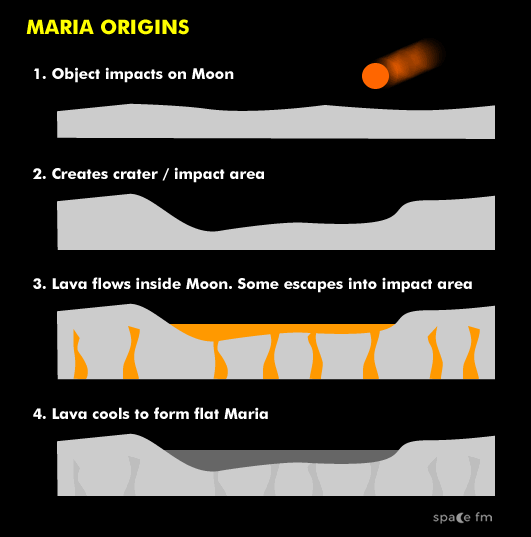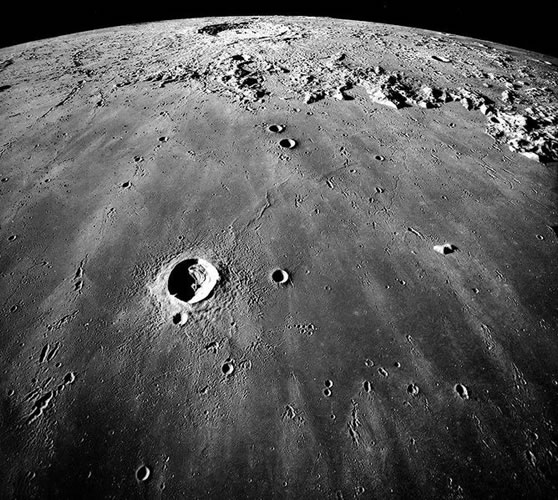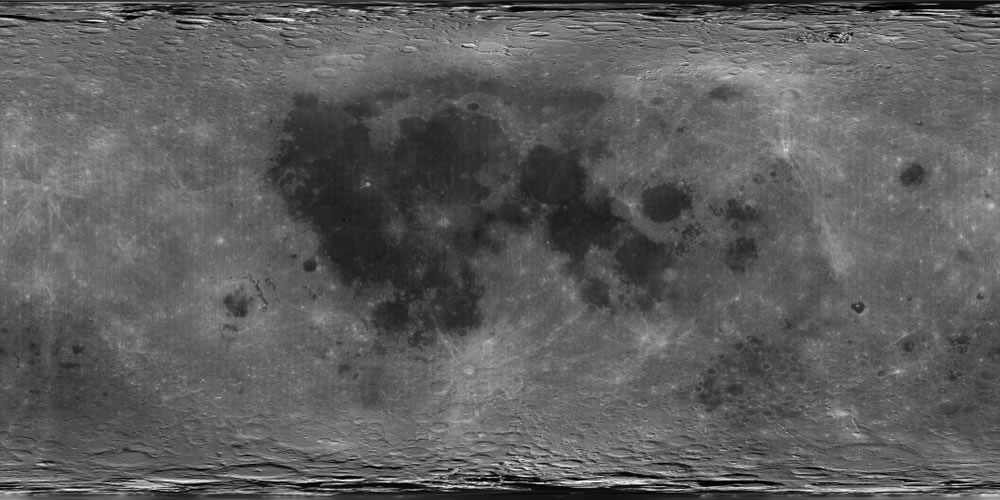Maria and Terrae
2.3 - Be able to recognise the appearance of the principal naked-eye lunar surface formations (continued in 2.4)2.4 - Understand the structure and origin of the principal naked-eye lunar surface formations, including:
b - maria
c - terrae
Maria are dark areas on the Moon. Mare (pronounced Mah-ree) is the Latin for sea. Maria is the plural, seas (pronounced Mah-ree-a).
While we see much of this when viewed from earth, only 17% of the lunar surface is classed as maria. These were mistaken by early astronomers for seas and are also known as the lowlands.
Terrae is the collective name for highlands. Terra (pronounced like it is) is the Latin for earth (which might seem confusing but let’s go with it). Terrae is the plural (pronounced like someone shouting the name ‘Terry’ at a dramatic moment in a cockney gangster film).
These are bright areas that are higher on the Moon’s surface than maria. They are hilly, mountainous and brighter than maria.
Maria appear darker than the terrae as they contain more iron-rich elements. There are few maria on the far side of the moon.
Rocks brought back from the Apollo missions have shown they were formed 3-4 billion years ago.
There was a period called the ‘Heavy Bombardment’ when the Moon (and presumably the inner Solar System) underwent a time of frequent and violent impacts. Millions of years (sometimes as many as 500 million years) later the Moon underwent a time of volcanic activity and lava was forced to the surface. This lava later turned to basalt. It flooded the lower impact areas and would have covered any other features on the landscape including other craters. The highlands were left untouched.
Today we can see many craters on the Terrae and fewer on Maria which also implies they were formed at different times.
Questions
- Why do scientists think that maria formed later than the highlands?
- Explain how maria may have been formed.



 | © All Rights Reserved |
| © All Rights Reserved |